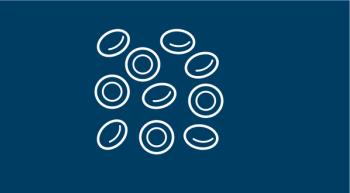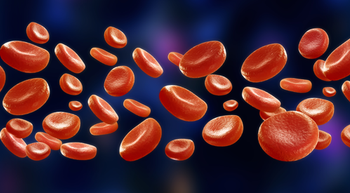
Preventing and Treating Oral Mucositis With Low Level Laser Therapy
Erin Bartell BSN, CCRN, BMTCN
Oral mucositis is one of the most debilitating side effects of many anticancer therapies, and positive results from the use of low level laser therapy (LLLT) inspired a team of nurses at UPMC Shadyside in Pittsburgh to develop an intervention to help a group of colleagues not only learn how to deploy the laser treatment, but also to better assess mucositis and educate patients on the importance of oral hygiene and other prophylaxis.
Erin Bartell BSN, CCRN, BMTCN, who practices in the stem cell transplant unit at UPMC Shadyside, reported the project’s findings in a podium presentation at the 42nd ONS Annual Congress.
After seeing evidence of how LLLT—which was being used routinely in the hospital’s radiation oncology department—improved quality of life for patients with head and neck cancer, physicians sought to have the treatment available for inpatients. However, the machines are expensive and practitioners need training to use them.
Bartell explained that their project was made possible because a beloved former staff member and oncology patient at the hospital, Barbara King, who was passionate about alleviating the pain of oral mucositis (OM) for patients like herself, secured a grant for the purchase of 2 additional LLLT machines.
Patients who have OM may have to suspend or delay treatment, need opioid analgesia, and require enteral/parenteral nutrition. If left untreated, OM ulcerations can lead to life-threatening infections in patients who immunocompromised, such as those undergoing hematopoietic stem cell transplant; it was a group of these inpatients at UPMC Shadyside, being treated with Busulfan, who received the patient education and the LLLT for this study.
For the intervention, 11 “super users” were selected to be trained on LLLT so they could treat patients at the bedside. In addition to training on its use from THOR, the device manufacturer, these nurses also received education to improve their OM assessment and patient education skills.
Patient Education to Prevent Oral Mucositis
“Because most of our nursing staff has about 2 years or less experience, it was really important for them to understand the risk factors for oral mucositis,” Bartell noted. Additionally, “they don’t necessarily understand the severe impact oral mucositis can have on a patient’s life, so we wanted them to understand that [this adverse event] can modify, delay, or even suspend treatment.”
Nurses received education on the chemotherapy doses and regimens, such as Busulfan, posing the highest risk for the OM, along with patient factors to look out for, such as poor oral hygiene. Thus, patients were encouraged to practice proper oral care, with nurses assisting them on oral hygiene techniques as needed. Patient education also emphasized that patients avoid irritants like alcohol, including high-alcohol mouthwash, and tobacco; other patient counseling points recommend use of sodium bicarbonate—based toothpaste, a soft toothbrush, a normal saline swish, and to stay hydrated. Biotene is also available at their hospital for patients experiencing dry mouth.
Importantly, the nurses also instructed patients to report any changes in their oral health, particularly pain, Bartell said.
“A lot of patients are a little embarrassed about talking about this,” Bartell said. “It’s really important for nurses to educate patients and really get [the patients] motivated about doing their own oral care—3 times a day after every meal and before bed.”
To provide an objective way for the nurses to document their data, the researchers added an e-record treatment form that pops up as part of the e-charting, Bartell said, where nurses could easily enter information on the appearance of the oral cavity, location of any ulceration or abnormalities using the NCI-CTCAE Grading Scale, results of a pain assessment, their patient education, and the treatment given.
How Low Level Laser Therapy Works to Treat Oral Mucositis
Bartell said that the THOR LLLT system is actually very simple to use, involving both an extraoral and intraoral probe. When it’s the patient’s first encounter with the device, the nurses provided extensive education: “We really wanted them to understand why they were receiving the treatment and if they had any questions,” said Bartell.
After the patient is in a comfortable position, and aided by flashlights that are available in every room of patients on the study, the nurse conducts a thorough oral and pain assessment. Nurses and patients wear protective goggles for the procedure.
The extraoral probe is positioned close to the cheek but without touching it to target the buccal area. After both cheeks are done, the nurse then holds the probe in front of the patient’s mouth with their tongue out to target the bilateral sides of the tongue and behind the lips, which, Bartell noted, is a common location for mucositis. The intraoral probe is then angled toward the soft palate. “If the patient develops ulcerations during the hospital stay, we then target those areas specifically with the intraoral probe.”
Each treatment area is done for 1 minute at a time, and the total treatment shouldn’t take longer than about 15 minutes, and that includes the patient education and LLLT administration, Bartell said.
“Preliminary qualitative assessments through patient interactions suggest that patients’ quality of life is improved through the use of LLLT,” the researchers noted in their abstract, and they recommended that OM education be part of the nursing orientation for use of LLLT.
“This education model and choice of therapy can be further expanded to other oncology populations for treatment and prevention of OM.”
Newsletter
Knowledge is power. Don’t miss the most recent breakthroughs in cancer care.
















































































